India: BJP’s rise in former communist bastion has Muslims worried
India’s West Bengal state – home to 100 million people – has seen rising Hindu nationalism, prompting concerns among Muslims.
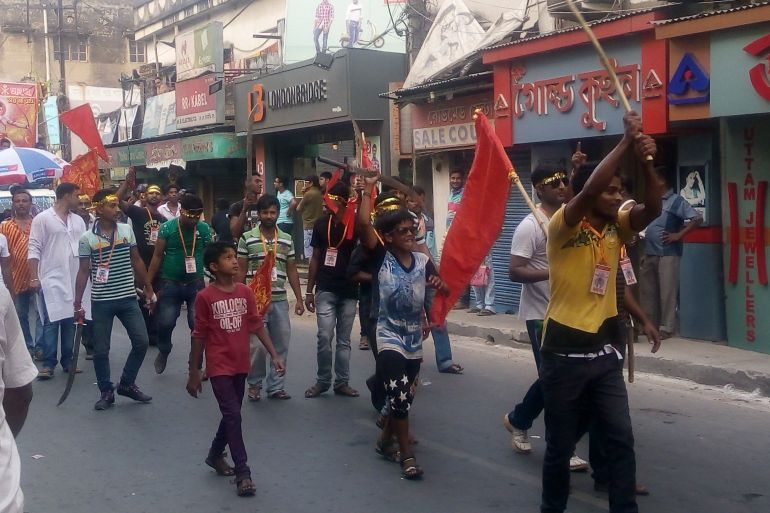
Hooghly, India – In November 2019, India’s Supreme Court approved the construction of a Hindu temple on disputed land in the northern town of Ayodhya, where there was once a medieval-era mosque.
Around the same time, authorities in the state of West Bengal – about 900km (559 miles) away – fenced a two-acre (0.8-hectare) land parcel in a sleepy neighbourhood of Hooghly district and barred all entry.
Keep reading
list of 4 itemsWhy the 2020 violence in Delhi was a pogrom
We foreigners: What it means to be Bengali in India’s Assam
From Pakistan to India: Tracing my grandmother’s refugee journey
Hindu pilgrims argue the site, with remnants of a mosque and a robust minaret, in Pandua town about 100km (62 miles) north of Kolkata, the capital of the West Bengal state, is a Hindu shrine of goddess Shrinkhala Devi.
This is precisely how the movement to build a temple for Hindu deity Ram in Ayodhya started. In 1949, Hindu activists surreptitiously placed idols of Ram inside the Babri Mosque. It was eventually demolished by Hindu mobs in 1992.
India’s governing Bharatiya Janata Party (BJP) rose to political prominence on the back of the temple movement, which was launched by its ideological parent – the Rashtriya Swayamsevak Sangh (RSS).
The RSS – a Hindu revivalist organisation – and its affiliate organisations such as Vishva Hindu Parishad (VHP or World Hindu Council) want to convert dozens of mosques across the country into temples. They say these Muslim places of worship were built after demolishing Hindu temples, though in most cases official records say otherwise.
The disputed shrine in Pandua, locally known as Badi Masjid (big mosque) is among them.
The shrine of Zafar Khan Gazi, a few kilometres south of the disputed Pandua mosque shrine, is now guarded by gun-wielding private security guards amid Hindu-Muslim tensions.
Syncretic culture
Pandua – like most of the nondescript towns of Bengal – is known for its syncretic culture – where Muslims and Hindus have lived together for centuries, often jointly organising their festivals.
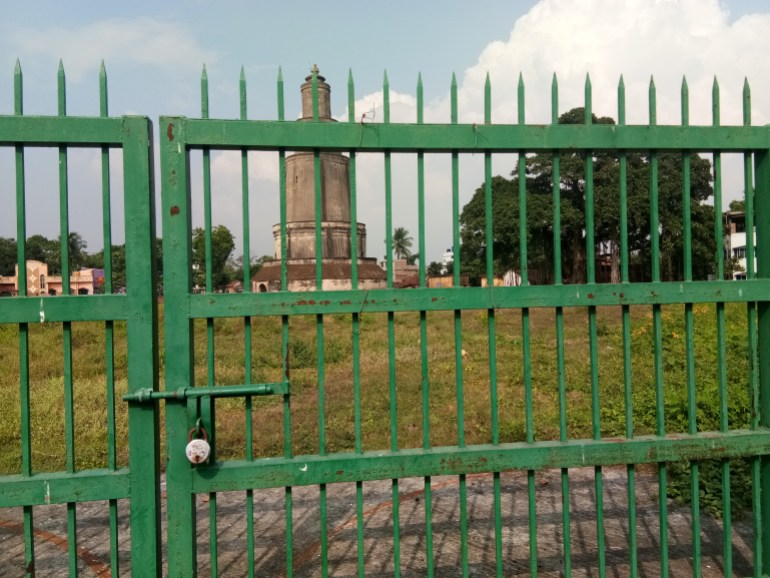
“We have never witnessed any communal animosity ever,” said Sheikh Moktar, 59, an administrative member of the local Islamic school in Pandua, home to 200,000 people, a quarter of them Muslims.
But in recent years, the communal amity in this once communist bastion seems to have frayed, particularly after Hindu right-wing groups started to push a hardline agenda. Analysts say right-wing Hindu groups linked to the BJP have used religious mobilisation for celebrations such as Ram Navami, which marks the birthday of the Hindu Lord Ram, for political gains.
The annual Ram Navami celebrations have witnessed thousands marching with swords, falchions and machetes, and shouting slogans in praise of Ram and playing songs denigrating Islam.
At an April 2017 Ram Navami rally in Chandannagar, a city in Hooghly district close to Pandua, Al Jazeera witnessed people, including children, marched with swords, chanting anti-Muslim slogans while giant speakers blared devotional music.
These rallies, organised across the state, have often turned violent in recent years.
Asansol district, an industrial city known for its coal mines, witnessed deadly Hindu-Muslim violence in 2018 and 2019.
Bhatpara in the North 24 Parganas district, an industrial township north of Kolkata, witnessed deadly Hindu-Muslim violence in May 2019 in which at least seven people died.
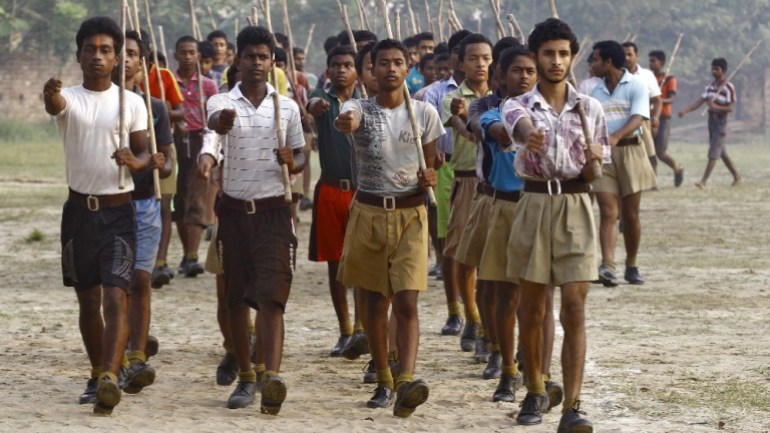
The area, home to more than 300,000 people, has emerged as the epicentre of communal tension for the good part of the last 10 years.
According to the latest data released in 2018 by India’s interior ministry, 27 incidents of violence were reported in 2015, but by 2017, the incidences of communal violence doubled in West Bengal state.
“There were at least a dozen riots in the area with deaths and large-scale damage to property over last two years,” said Subha Protim Roychowdhury, a member of a left-leaning civil society group.
“Almost on a daily basis, Bhatpara witnesses violence. It is impossible to keep a count of the incidents,” said Roychowdhury.
‘Defends the religious mobilisation’
Tushar Kanti Tikadar, who heads Hindu Jagran Manch (HJM), an affiliate of the World Hindu Council (VHP) in south Bengal, defended the religious mobilisation.
“It used to be celebrated outside Bengal earlier but now we do not need to sensitise Bengalis about Ram Navami, they know it,” Tikadar, who is based in Barasat in North 24 Parganas district, told Al Jazeera.
“We can now unite people in the name of Ram, it is a big success.”
He denied that Ram Navami celebrations were aggressive or divisive. “If Muslims can display weapons during Muharram, why cannot the Hindus,” he argued.
The BJP has continued with a very aggressive anti-Muslim campaign. Last year, the party’s Bengal leader, Dilip Ghosh, said if they come to power, the party would “identify five million Muslim infiltrators and deport” them to Bangladesh.
His rhetoric was in line with the party’s stand against undocumented migrants from Bangladesh and Rohingya refugees. Senior party leader and home minister Amit Shah has in the past called Bengali immigrants “termites”.
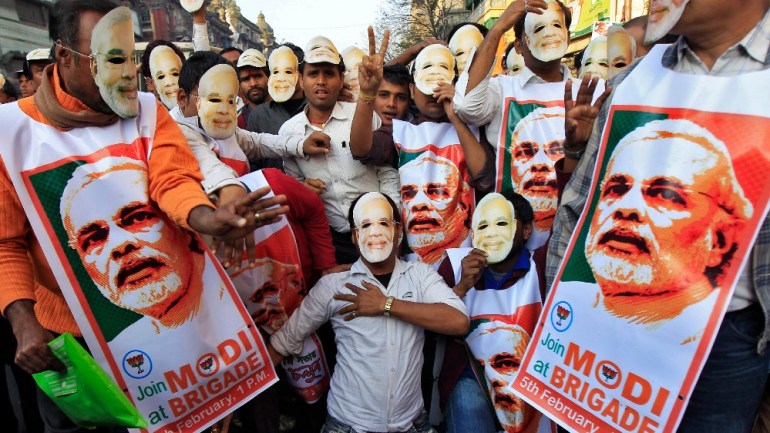
In neighbouring Assam state, nearly two million Bengali people, including Muslims, were excluded from a citizenship register, effectively rendering them stateless.
West Bengal – home to about 100 million people – is one of two large Indian states, where the BJP is yet to capture power, despite running the national government since 2014.
The party has also been trying to make cow slaughter an election issue in the state, where beef is consumed widely by both Muslims and Hindus. Dozens of Muslims have been lynched across India by Hindu mobs after being accused of smuggling cows for slaughter since 2014 when Prime Minister Narendra Modi came to power.
Hardline Hindu agenda
The hardline Hindu agenda, it seems, has paid dividends for the BJP, which bagged 18 out of 42 parliamentary seats in the 2019 parliamentary elections in West Bengal. The party had won just two seats in the 2014 elections.
The BJP has deployed its entire top leadership, including Modi and his right-hand man Shah, as it aims to win the state assembly elections slated to be held in the summer of 2021.
The party has also intensified efforts to appropriate Bengali icons, including secular freedom heroes such as Subhas Chandra Bose and Rabindranath Tagore, who wrote India’s national anthem.
The Communist Party of India-Marxist (CPI-M) which dominated state politics for 34 years, has now been relegated to the margins, with the BJP emerging as the main challenger to the governing All India Trinamool Congress Party (AITC) led by Chief Minister Mamata Banerjee.
The state was largely free of religious strife during the communist party rule that ended in 2011, although elections were marked by political violence during that period.
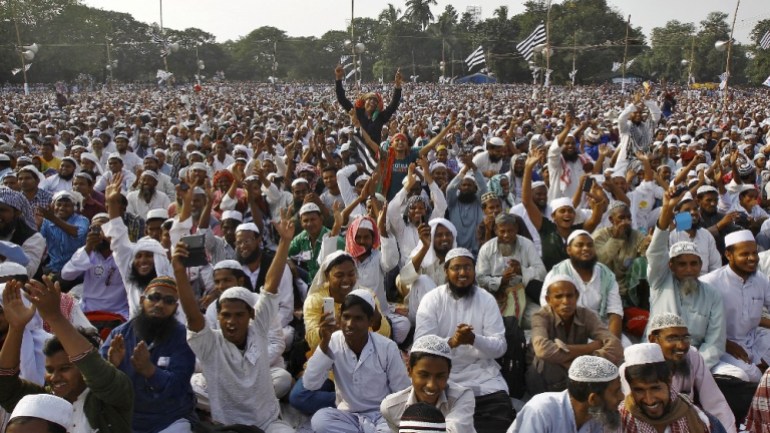
The CPI-M, analysts say, were able to secularise Bengali society, which was divided along religious lines in the wake of the partition of India in 1947. The partition saw large-scale population transfers between Indian West Bengal and East Pakistan (formerly East Bengal), which later became Bangladesh.
“It was a deeply divided society on communal lines owing to violent partition of India and Bengal in 1947 and following influx of [Hindu] refugees from East Pakistan, now Bangladesh,” said Ranabir Samaddar, a political scientist based in Kolkata.
“… The communists managed to secularise a divided post-partition society by promoting tolerance among Hinduised refugees in particular and the Bengalis in general,” Samaddar, the founder and distinguished chair of Mahanirban Calcutta Research Group, a well-known social science institute, told Al Jazeera.
‘Weaponised the process of Hinduisation’
In the last decade, Hindu right-wing organisations have pursued politics of religious polarisation, while pushing a narrative that successive governments favoured Muslims, who form one-third of the state’s population.
“The BJP weaponised the process of Hinduisation using money and muscle power and managed to influence the poor – Dalits and the Indigenous population – to develop a mass base,” Samaddar said.
Muslims remain one of the most marginalised communities with barely 6 percent representation in government jobs while housing discrimination is rife in cities. The literacy rate among Muslims is also seven percent (2011 census) lower than the national average.
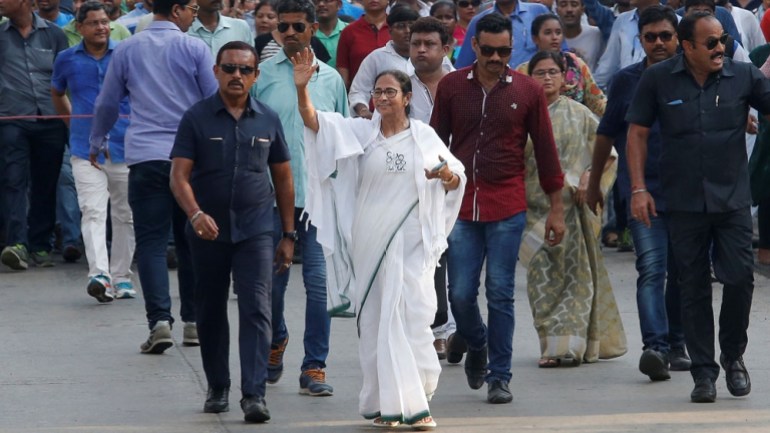
Muslim representation in democratic bodies in the state has improved in recent years. In 2011, Muslims formed 20 percent of the state Assembly, the highest percentage since independence, but it is still lower than their population.
The fear of the rise of the BJP is palpable among Bengal’s Muslim community, which has faced increased attacks and political marginalisation across India since the Hindu nationalist party came to power at the centre six years ago.
The BJP governs 17 of India’s 28 states but it has just a single Muslim legislator. India’s 543-seat Parliament has 27 Muslim members of Parliament. Of the 302 BJP seats, there is not one Muslim member of Parliament.
Muslims across India have faced attacks at times for their appearance and their businesses have faced an unofficial social boycott by Hindus.
During the pandemic, the media ran vicious campaigns against Muslims, blaming them for the spread of the coronavirus, which has killed more than 150,000 people in India.
‘Worrying trends’
Manzar Jameel, an education activist based in Kolkata, said the “trends are worrying”.
“Very often, a Muslim is subjected to comments in public space which was unthinkable few years back, it is scary,” the 60-year-old activist said referring to Islamophobic and hateful comments against the community.
“We were not subjected to such aggressive comments in Kolkata, ever. Despite latent anti-Muslim sentiments and all its drawbacks, it was a largely peaceful place during the left’s rule. People used to come to eat with us spontaneously during festivals, which has reduced,” he said.
One-fifth of Kolkata’s population comprises Muslims and the city has not seen major religious violence in decades. Currently, the city’s mayor is a Muslim from the governing AITC party.
But Muslims in the multicultural city have started to hide their identity in public, a few members of the community said. Nousheen Baba Khan, a university student, acknowledged that this tendency “to remain faceless” is growing.
Another young Muslim woman said – on condition of anonymity – her parents “instructed” her not to “cover [her] head or wear anything that may indicate” that she is a Muslim.
Lumaah Yasin, an information technology professional and businesswoman, wants her son to settle abroad. “We may not say it but yes, we are scared,” she said.
“And it is not just fear of the Muslims, it is a larger fear when we think of this country … if you divide the country and the state on basis of communities, ethnicities and languages … what would happen to all of us,” said Yasin.
Yasin, in her mid-30s, feels West Bengal’s “tolerant and cosmopolitan” culture which allowed people to peacefully cohabit with differences will be attacked if the BJP comes to power.
“And, it is a far bigger price to pay than my son’s travel abroad.”